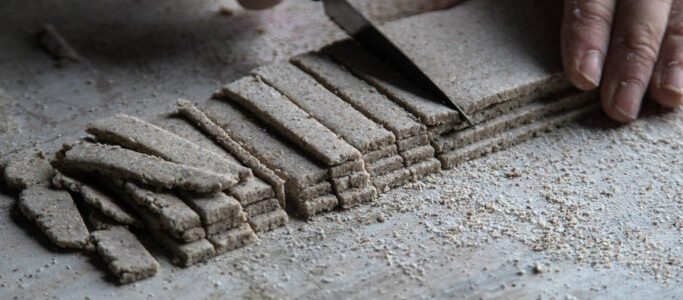As ancient as they are tasty, i pizzoccheri they made history. Born in a small village in the Valtellina, have fed the inhabitants of Teglio. A purely peasant population, this one, which has always found sustenance from its crops and from its own hands. This is how the pizzocchero, a traditional first course, poor but substantial, which has been able to combine the great availability of buckwheat with the ingredients of the garden and the products of the farm.
Pizzoccheri, an ancient one delicious reality
The first documentary testimony in which the Valtellina's pizzoccheri It dates back to 1548, when the typical pasta of the valley makes its appearance in "Catalog of the inventory of the things that are eaten, and of the drinks that are used there today" written by the Italian humanist Ortensio Landi. The original recipe is jealously guarded byPizzocchero Academy of Teglio, which was founded in 2002 and that holds the primacy, without equal. Already in 17th century the cultivation of buckwheat, which is the main foundation for the history of this dish, was widespread in the Valtellina area, so much so that dark flour it is precisely that "secret" ingredient that makes this pasta unique in its shape and texture.
The pizzoccheri, then, have a famous culinary reference within the work of H.L Lehmann Die Republik Graubündenthe. They bear the name of Perzockel, describing how noodles of buckwheat with the addition of eggs. Initially we dedicated ourselves to cooking the pasta and then we moved on to the sauce: butter mixed with grated cheese was added. In peasant houses, however, the recipe was the same but the format changed. Instead of noodles they preferred to prepare gnocchi. The peasant houses were very small and the spaces became narrow, sometimes even rolling out the dough became complicated. Hence the reason to opt for a more "comfort" pasta.
Only from the early nineteenth century on the tables of the Valtellina more wealthy the plate of pizzoccheri similar to the current one begins to appear. Greater wealth led to greater substance, even in tavala. Therefore they worked on coarse noodles of buckwheat and white flour in variable proportions depending on the locality, with a rich dressing consisting of chopped potatoes, cabbage or ribs or green beans. Subsequently the pizzoccheri were drained and covered with layers of two types of flaky cheese: a thinner one called féta and a more seasoned semi-fat. Nothing was missing, in fact on the grand finale, all the preparation was then enriched with a good dose of lard accompanied by garlic. In some areas, the latter was replaced by onion and sage.
A good tip? If you want doc pizzoccheri, use the Casera DOP cheese, a semi-fat cheese produced exclusively in Valtellina and protected by a brand of typicality.
In addition to the original version, which in 2016 obtained the IGP, this dish lends itself to creative variations: sprouts, turnip greens, pumpkin and escarole replace cabbage and their "degreasing" power, while the dark effect is entrusted to gorgonzola or sweet provolone.
Discover new tasty contemporary recipes in the new February issue of Sale & Pepe on newsstands
By Elena Strappa
This recipe has already been read 335 times!
